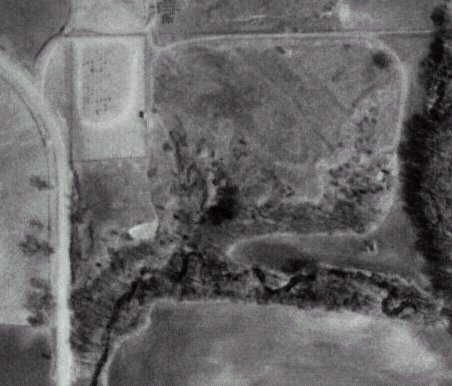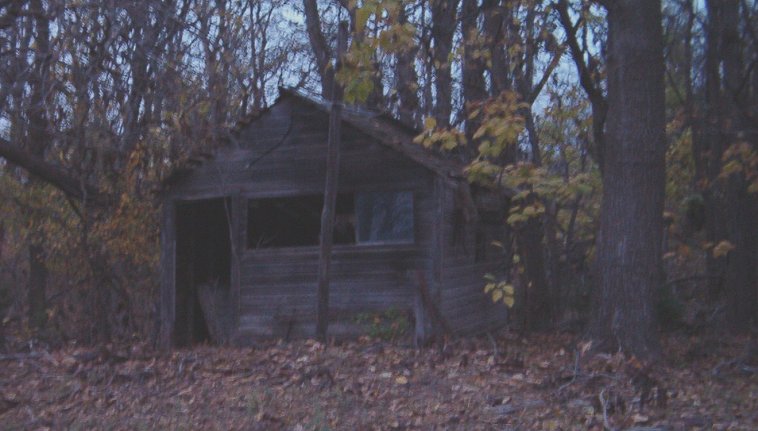The Wilmore News, Wilmore, Comanche County, Kansas, Tues., October 3, 1939 Mr. Ira Schultz passed away last Thursday evening, after an illness of only three days. All that kind friends and medical care could do for him was of no avail. Mr. Schultz lived alone in a little cabin on the bank of the creek a short distance north of town. He made daily trips to town and often assisted at the Pendergraft filling station. He came to town as usual on Monday before he became ill on Tuesday. He was a kind and honest man who leaves a host of friends in Wilmore and vicinity who will miss him greatly.
MR. SCHULTZ DIES
Funeral services were conducted at the Baptist Church Saturday afternoon at 2:30 with Rev. J.P. Woods of Sun City in charge. A male quartet composed of Valtos and Royce Richardson, Joe Woods and Roderick Baker sang three numbers: "Higher Ground", "The Old Rugged Cross" and "Sweet By and By" with Tryphena Redfield, accompanist.
Burial was in the Wilmore Cemetery.
==================== OBITUARY
======
Ira H. Schultz was born in Springbay, Ill. Feb 6, 1858 and died Sep. 28, 1939 at his home in Wilmore, aged eighty one years, seven months, twenty two days.
He came to Kansas in 1896 and was married the following year to Sarah Jane Harrington of Wellington, Kans.
During the next few years he was employed as conductor on the Rock Island Railway, afterwards being in business in Wichita and later farming in Oklahoma, Arkansas and Kansas. In the year 1923 he came to Comanche Co. Kans. to make his home and has resided here continuously since that time.
Three sisters and one brother preceded him in death, and he leaves to mourn his passing two sisters, Fannie Parshall of Wichita and Virginia Schultz of Chicago Ill., besides many friends whom he made during his residence in Wilmore and vicinity.
Excerpts concerning IRA SCHULTZ from an Interview with Wendel Ferrin, 13 April 1989. Wendel: Well, he found it right south of his house; the exact location is hard to describe unless you know the area. There were caltapa trees there which he had planted after he moved there, or perhaps even before the moved there, but anyway, south of the house there was an L-shaped group of trees and at about the center of the short leg of the reversed L, which was to the north, was where he found the skull just to the south of the center of the short leg of the L. There's a building there now - well, it's the building which used to be on The Zoo that Dad built for Ira Shultz to live in and after Ira died, Dad (Ernest Leroy Ferrin) moved the building out to his place and used it for a washhouse for several years, then moved it to its present location and used it for a shop. That shop is still standing now about 40 feet north of the row of trees we're talking about.
Jerry: We can draw a map...
----------
Jerry: We were looking at this Chronological List of Zoo Information that Evelyn Reed sent regarding that land that is on the north edge of Wilmore, the 40 acres known as The Zoo -- where were the arrowheads found that you knew of?
Wendel: They were found on top of the hill just east of the cemetery. I don't remember any being found down in the valley. That was all farmland at that time and I think every one that was ever found - no, I guess Ira Shultz found some that weren't plowed up, but all the ones I found and -- as I recall it -- all the ones that Dad found, were found when the ground was being cultivated. (Note: Ernest Ferrin owned and farmed The Zoo from 1927 to 1965; Wendel Ferrin did most of the actual farming of it during the last several years Ernie owned it.)
Jerry: Well, I remember riding on a tractor with Poppy (Ernest Ferrin) once on the flat land south of the creek when he spotted something he thought was an arrowhead in a fresh furrow and had me hop off the tractor to go see what it was.
Wendel: I don't remember ever knowing of any being found south of the creek but I'm not saying that there weren't south of the creek; I just don't remember it if there were.
Jerry: Were there any other Indian artifacts discovered on The Zoo that you recall?
Wendel: There was a skull found just north and a little bit west of where the shack was... the house -- well, I don't suppose anyone there now recalls where it was, but it was nearly at the base of that hill right straight north of the main (street running north and south) of Wilmore. The skull was found nearly at the top of the hill. I don't really know who was diggin' there or why, but it wasn't Dad who found it. Someone else found it.
Jerry: Would the person who found the skull have been Baldwin?
Wendel: It could have been. I could have been Henry Baldwin.
Jerry: Who built that shack you're talking about?
Wendel: Dad did. He just built it for Ira Shultz to live in -- this Ira Shultz, the way I remember it, just came into Wilmore as a working man, I mean just as a hired man, and he worked for Dad for several years, off and on, and then he got physically unable to work so Dad let him live in an old granary -- I believe it was a granary or a real old house, I'm not sure which it was -- but then Dad built that new house, a one-room house approximately 12 feet by 14 or 16 feet for Ira. He poured a slab, built the house and then, after Ira died, Dad put it up on skids and drug it out home to use himself.
Jerry: And that's the shop building on Poppy's farm?
Wendel: That's the building that he used for a shop later; for the first few years he used it as a wash house. It's still standing there to my knowledge; it was the last time I was there and I'm sure it is now.
Jerry: About when did Poppy build the building on The Zoo for Ira Shultz to live in?
Wendel: It was in the thirties, I'm pretty sure, probably in the mid thirties.
Jerry: It says in Evelyn Reed's Chronology of The Zoo that "Ira Shultz dies alone in a little cabin on bank of creek a short distance north of town" -- is that little cabin the same shop building we've been talking about?

At left: USGS aerial photo of the north end of Wilmore, Kansas. The Wilmore Cemetery is at upper left in the photo. The road to Ira Schultz's cabin described by Wendel Ferrin may be seen passing the northern edge of the cemetery going east and then turning south towards Mule Creek where Ira's cabin stood.Wendel: That's it. Yeah, Dad went down and found him -- no, I believe it was someone else who found him dead; he had been sickly and someone from town would walk over to check on him. You couldn't drive there very conveniently at all; it was hard to keep a creek crossing from the south side. To drive there, you had to go up around the north sie of the cemetery, across the field, then down around the hill and then back into the cabin. It was rather difficult to get to when you were driving. There was a creek crossing just west of where his house was and, sometimes, the crossing was good and you could drive across it with a car, and, sometimes, depending on the rains, you couldn't. Off and on, at different times, Dad hauled rocks in there to make a crossing; sometimes it was good and sometimes it was just impassable.
Jerry: In this Chronology of The Zoo, it says that in 1926 Henry Baldwin had a dugout located about a quarter of a mile north of Wilmore near the top of the hill.
Wendel: That was probably where that skull was found. The indentation in the ground is still there; I know exactly where it is and could walk right to it. It's near the top of the hill and just north of where that shack -- we always called the building Dad built for Ira a shack -- was located. The dugout is north and west of where the shack was, just how much west I don't remember exactly in terms of feet.
Jerry: Is the concrete slab where Ira's shack was still there?
Wendel: I'm sure it probably is; I don't know any reason why it wouldn't be. It was just a three and a half inche thick slab but, to my knowledge, it was never taken up; and the well might possibly still be there; they just drove a "sand point" in the ground and had a pitcher pump on it.... ----------
Jerry: About Ira Schultz: do you know where he came from?
Wendel: No, I don't.
Jerry: Poppy just liked him and that's why he built a house for him?
Wendel: Oh, yeah, Dad always thought a lot of him. Ira was always such a good worker when he worked for him and Dad also liked Ira personally. I don't know whether Ira worked for Dad before I was born or when I was small. My first memory of Ira is when he lived down there on the Zooo and Dad had already built that home for him -- "home" -- we always called it "the shack". All my life we called it "the shack"; even after we moved it out to the home place, we still called it "the shack".
END OF INTERVIEW


